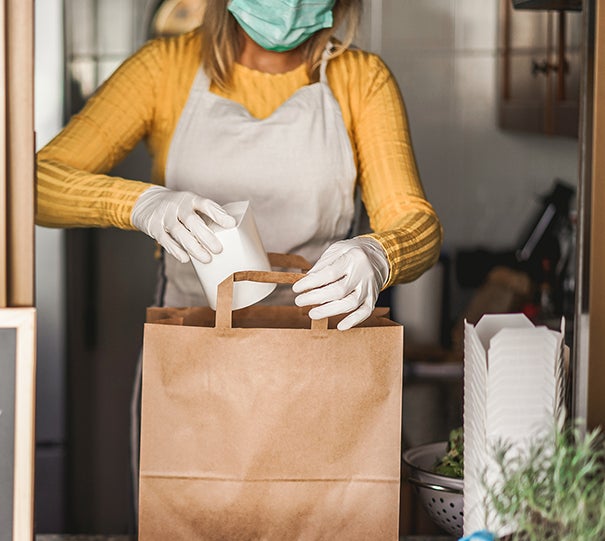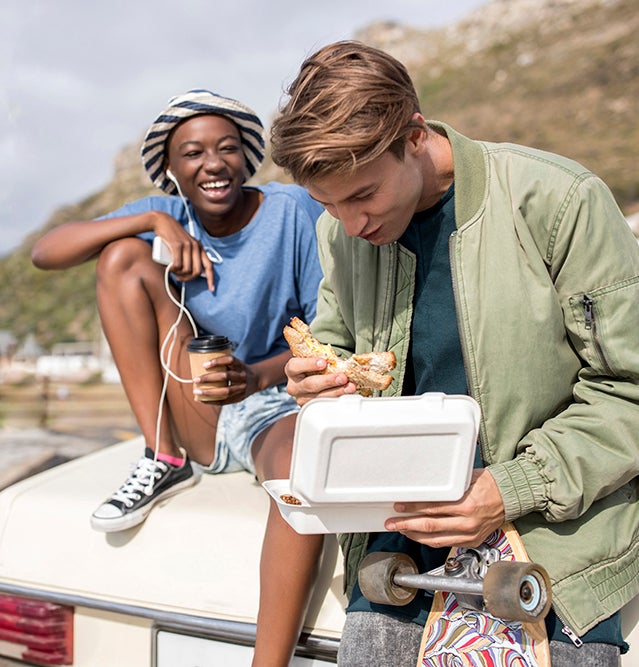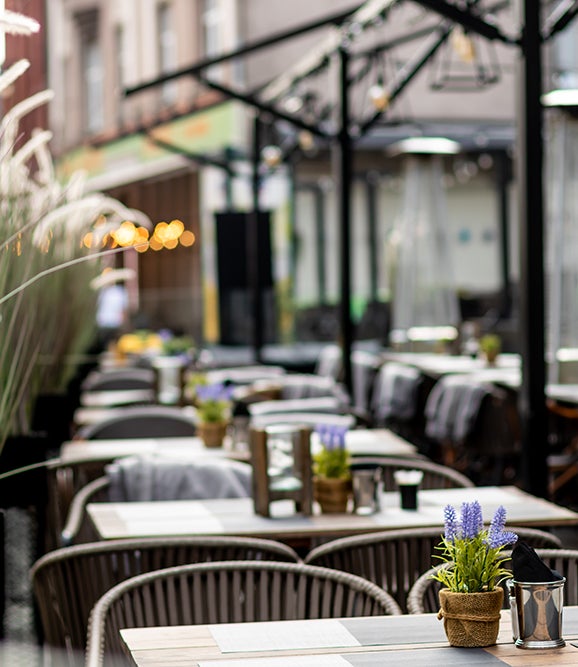Operators Explore the
Great Outdoors

Restaurateurs look to al fresco dining to help boost sales as they continue to wrestle with COVID-19.
As the nation gradually acclimates itself to the pervasive COVID-19 pandemic, most states have begun allowing restaurants to open outdoor dining spaces.
In fact, some states have initially allowed restaurants to open for outdoor dining only. As a result, many local municipalities are seeking to make it easier for operators to offer this service by relaxing regulations and closing some public streets to accommodate new areas for outdoor seating.
Operators report that many customers are choosing to sit outside, perhaps out of lingering concerns over the possible transmission of the virus.
“The outside dining is what people are going for,” says Ted Lescher, general manager of Lucky’s Burger and Brew in Roswell, Georgia. Lucky’s Burger and Brew has an outdoor patio and a large yard that has been converted into a dining area with the addition of some widely spaced picnic tables. “Normally, people fill up the inside, then they go outside,” Lescher says. “Now it’s just the opposite.”
Movie and a Workout

Rapillo launched the screenings with a low-budget set-up, but he quickly decided to invest in a high-quality screen, speakers and a high-definition projector when he saw how popular the movies were becoming.
“Almost every night, we have to turn cars away,” he says.
In fact, in-car dining has become much more widely accepted during the pandemic, said Jack Li of research firm Datassential in a recent webinar.
“We are seeing things like parking-lot picnics,” he said in the webinar. “Keep in mind that the car is a more important part of the way people eat and the way they get food. You may want to think about food that is made to be eaten in the car.”
V Pizza also recently added another outdoor activity—outdoor fitness workouts, led by some of Rapillo’s personal-trainer friends. The outdoor workout sessions are followed by complementary beer from local breweries, which sponsor the events, and free chicken wings courtesy of V Pizza.
“…the car is a more important part of the way people eat and the way they get food. You may want to think about food that is made to be eaten in the car.”
– Jack Li
Datassential
Considerations for Outdoor Dining
Rick Camac, dean of restaurant and hospitality management at the Institute of Culinary Education, offers some advice for operators planning to expand their operations to include al fresco dining service:
- Rick Camac, dean of restaurant and hospitality management at the Institute of Culinary Education, offers some advice for operators planning to expand their operations to include al fresco dining service:
- Maintain your focus on the health of both employees and guests. “It may be easier to comply with rules and regulations inside your restaurant. Monitoring an outdoor area can be much more difficult—and we really don’t want to have to monitor our guests anyway,” says Camac.
- Consider how you will respond to various weather conditions, including rain and excessive heat or cold. Table umbrellas may not be sufficient to protect guests in a heavy rain, he says. Also, be conscious of dishes becoming too warm or too cold, depending on the outside temperature.
- Be conscious of theft. “It’s easier for guests to ‘duck out’ on a check outdoors,” says Camac. “Restaurants are going to have to rethink how they manage outside tables.”

Jenny Dorsey, a culinary consultant based in New York and Los Angles, suggests that operators uncertain about how to operate in their outdoor space test the waters with a “friends and family” practice meal for invited guests.
Among the considerations are how servers go back and forth to the kitchen while maintaining social distancing, and how consumers access the restrooms.
In the meantime, operators anxious to return to normal should continue to use caution as they start up their businesses—outdoors and indoors—once again.


